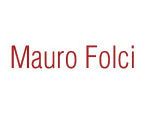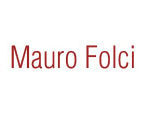Read the whole article
The ring of sharing
The relationship between art and the multiple meanings of remains and the former’s impossibility to free itself completely from this connection is a reflection that shows through in many works by the artist. The ring of sharing (2005) is a performance that focuses on a specific form of not leaving remains in the shape of the gift. It refers to Baudrillard’s thoughts on how all remains can be recovered by the capitalist system, which needs remains to reproduce itself and territories that haven’t been metabolised yet to convert in machines that produce capital gain. Also according to Marx, remains are accumulation of capital, wealth that is taken away from redistribution. Baudrillard speaks of a celebration and playfulness in squandering, consumption, clearing all, putting everything in circulation. […]
Baudrillard’s model to avoid leaving remains is the potlach, is the law of gift-giving. The gift is a very rich paradoxical figure, full of images and reflections. It is a paradox because it indicates a total equivalence and gratuity and at the same time it imposes the respect of the inescapable obligation of reciprocity. This also applies to divine grace, and it explains why the laws of gift-giving are at the foundations of all archaic societies and, in increasingly distorted ways, of modern and late modern societies. The laws of gift-giving don’t work by accumulation but by disappearance, privation and destruction of one’s goods. In the potlach circle, receiving a gift without a mutual exchange is a sin, the subtraction of a good and of shared energy; the dynamics of potlach changes depending on the the geographical location: in Latin America the potlach circle is very interesting, as goods are destroyed during collective ceremonies. (Folci, 2005) As Tito Marci says in his book L’Anello della condivisionepublished in conjunction with the homonymous performance, ‘The Ring of Sharing embodies a complex metaphor of gift-giving and of its paradoxical practice’. This work originated from a laboratory project at the State Art Institute ‘Antonino Calcagnadoro’di Rieti, where the artist was asked to establish a connection between jewellery and modern artistic practice. Devised during a seminar, the project consisted in persuading as many people as possible to donate a piece of gold: a ring, a broach, a necklace etc. The donors where asked to give apiece of writing, a photograph or an object that had a particular connection with the donation. The collected gold pieces were fused into a 1km long thread cut in 10cm long, 1mm thick fragments that were given back during a public event involving the participants of the project and the public. In the words of Mauro Folci: it turned into a circulating open laboratory which involved many citizens in the construction of a participated event, a kilometre long gold thread but above all a reflection on the sense of community and of identity. […]The most important outcome from the ring is cohabitation and the possibility to enable a networked communication using a language that can escape, both for its modes and contents, the power of language put to work. It is difficult to say if this has happened and to what extent, but after a year it is certain that there is still
talk, as if about a ghost or an urban legend, of a certain gold thread. (Folci, 2005) The Ring of Sharingis a refection on the absence of remains in the archaic notion of gift-giving, which was studied and continues to be reflected upon by numerous social scientists. Marcel Mauss and Malinowski first studied the paradoxical characteristics of practices such as the potlach and kula, which both are a clear demonstration of the double value of gift-giving, its aspect of free bond and in particular its originating of the threefold obligation of giving, receiving and reciprocating that are the essence of gift-giving. To accept a gift, acknowledge it in its gratuity actually amounts to submitting unconditionally to its laws, the same laws that inevitably govern its return (which is a re-turn of the ability to donate itself). Once donated and acknowledged as a gift, the gift compels the receiver to donate, and become donor in turn. If the gift is acknowledged as such, by virtue of this acknowledgement it is annulled. As George Simmel pointed out, gratitude can only exist in admitting to an inability to reciprocate, in the impossible task of an adequate return for a free deed offered in all its originary and spontaneous freedom.
What gratitude returns is certainly not entirely available on the level of equivalence. No calculation or measure can ever work. There is always the acknowledgement of something that goes beyond the size of the exchange, that exceeds the fairness of the compensation. (Marci, 2005). Tito Marci points out that true gift-giving reveals the priority of relationships, and it is the latter that makes exchange impossible: the ties and relationshipscreated by gift-giving are unique and unmeasurable. Relationship is the only possible remains of authentic gift-giving.
M.Roberti, by workink whilst talking.Talking whilst working
This work originated from a laboratory project at the State Art Institute ‘Antonino Calcagnadoro’di Rieti, where the artist was asked to establish a connection between jewellery and modern artistic practice. Devised during a seminar, the project consisted in persuading as many people as possible to donate a piece of gold: a ring, a broach, a necklace etc. The donors where asked to give apiece of writing, a photograph or an object that had a particular connection with the donation. The collected gold pieces were fused into a 1km long thread cut in 10cm long, 1mm thick fragments that were given back during a public event involving the participants of the […]

























